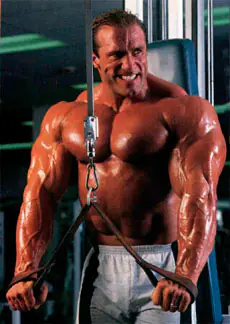In fitness, bodybuilding, powerlifting, as well as among weightlifters, arm wrestlers, weightlifters and other representatives of the strength disciplines of “iron sports,” there are two extremely important theoretical concepts. This is the amount of load received during training and its intensity. What do they depend on? What do they influence? And how are the volume and intensity of the load interrelated? – this article on our website will tell you about all this.
Methodological principles for the formation of strength abilities of athletes.
In order for muscles to improve functionally, they must be qualitatively stimulated from the outside, that is, placed in conditions that actually force them to exert impressive efforts. These conditions are:
- I) intensification of the muscle work regime;
- II) training load;
- III) the relationship between muscle work and recovery processes in the body;
- IV) qualitative, progressive increase in load.
Intensification of the muscle work regime. The most universal and effective way to intensify muscle work is through all kinds of weighting (weight) movements. In practice, the following are used for this:
- free weights (dumbbells, kettlebells, barbells);
- simulators;
- expanders,
- shock absorbers;
- own body weight, etc.
It turns out that the more weight our muscles lift, the greater the quality of tension they develop. However, only optimally strong muscle contraction with its systematic repetition acts as training stimulus. The threshold (extreme) value of training stimulation for increasing muscle strength should not be less than maximum strength. With the growth of physical muscle strength, the threshold value of the level of irritation that can create a training effect increases and for trained athletes amounts to 80-95% of the maximum maximum. Consequently, the development of strength requires a gradual increase in the intensity of the stimulus.
The increase in strength depends on the level of fitness of the athlete: the less prepared the athlete, the more intense the actual increase in strength. However, as the level of skill increases, the rate of strength gain decreases and further gains can only be achieved using means of appropriate intensity.
The following are distinguished: I) quantitative (volume) and II) qualitative (intensity) - the main parameters of the training load. Volume characterizes the total amount of work performed and the time spent on it and is regulated (increases or decreases) by changing the number of exercises performed or their repetitions/approaches, respectively, up or down.
Intensity reflects the intensity of our body’s functioning under training conditions. Increasing intensity can be achieved in many ways:
- I) increasing the weight of the burden,
- II) increasing the speed of movements,
- III) reducing rest pauses between subsequent approaches,
- IV) replacing some training exercises with others that are significantly effective, etc.
In fact, the volume and intensity of the load are decided in the training process different tasks. Thus, intensity mainly reflects an increase in all kinds of functional capabilities; while volume engages and stabilizes the morphological restructuring of the athlete’s body at a new, more serious level. However, the volume and intensity are in some way closely interconnected. In fact, performing a large amount of physical activity is only permissible at moderate intensity. And on the other hand, a significant increase in intensity is possible only with a significant decrease in its volume.
Post Views: 102


